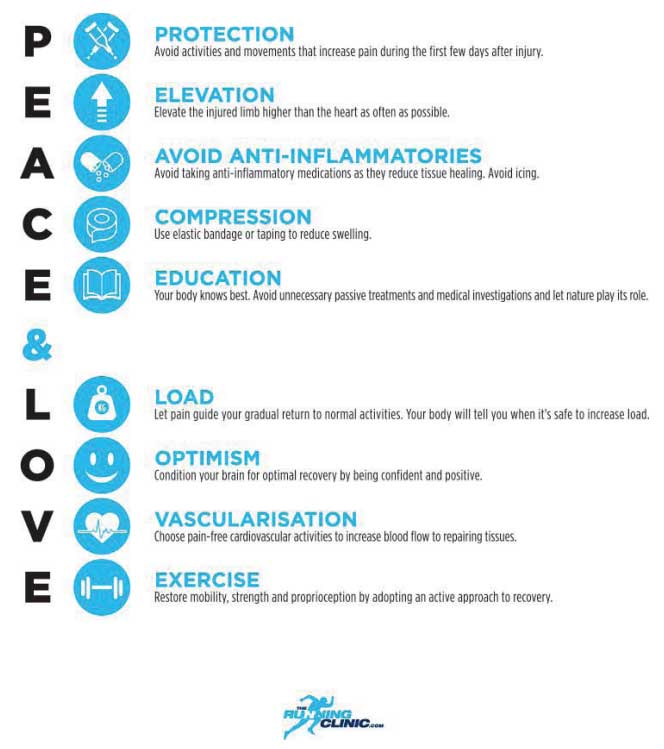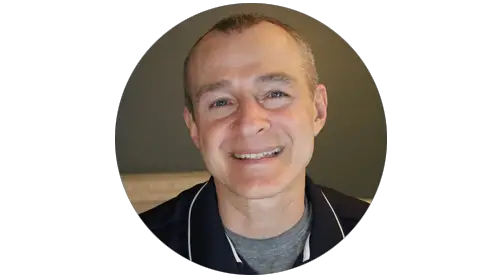Pickleball Injuries and Recovery
Acute pickleball injuries happen every day and knowing what to do to treat these injuries at home is important.
From ankle sprains to cervical strains… literally head to toe, pickleball players are getting hurt and need to learn the new acronyms P.E.A.C.E. & L.O.V.E.
Click here for information on Pickleball elbow pain.
History of R.I.C.E. for Pickleball Injuries
“In 1978, Dr. Gabe Mirkin authored The Sportsmedicine Book in which he first used the acronym, RICE.” (Link)
R = Rest
Resting after an acute injury can be helpful for the first 24 to 48-hours. Keep in mind that rest isn’t the same as immobilization.
I = Ice
Using ice to produce a cold sensation on the skin may be helpful to reduce the subjective pain experience.
C = Compression
Acute injuries are often associate with swelling. Swelling in the area is the body’s immune system’s response to changing the cellular activity and removing damaged cells while repairing injured tissue.
E = Elevation
Keeping the injured extremity above the level of your heart may help support fluid exchange and allow proper lymphatic drainage.
The New Paradigm of P.E.A.C.E.
P = Protection
Avoid physical activities that increase pain for the first 24 to 48 hours. I will often say to avoid activities that increase pain later that night or the next day.
E = Elevation
Position the injured limb or joint above the level of your heart. If it is a leg, the hip should be flexed to 45-degrees or more while the torso is flat. If it is an arm, you might try positioning pillows under the arm to flex the shoulder to 45-degrees or more.
Elevation will allow gravity to assist the lymphatic drainage. In a normal upright posture, gravity is often working to keep fluid down which is the opposite of what we want during the early recovery process.
A = Avoid Anti-Inflammatories
Physician prescribed anti-inflammatories may help reduce acute pain, but evidence suggests that pain might help individuals self regulate activity during the early stages of recovery. Follow your physicians guidelines, but research non-pharmacological analgesics as well.
C = Compression
When you are unable to elevate or eliminate the effect of gravity, compression is a great way to help support lymphatic drainage. A spiral wrap compression bandage may be used on the upper or lower extremity.
E = Education
One of the greatest, non-pharmacological analgesics available is education. Knowing what is happening and having the peace of mind to know that nother is being damaged more or made worse can go a long way in reducing the subjective experience of pain.
The New Paradigm of L.O.V.E.
L = Load
Loading for tendons and ligaments happens when tension is applied to the tissue. Isometric loading is usually first and when it is pain free then loading with motion may follow.
Joints are loaded with compression. Standing will load the hip, knee, and ankle joint. A plank or push up position will load the wrist, elbow, and shoulder.
O = Optimism
Staying optimistic and knowing that your body may be injured, but understanding the difference between injured and damaged is important. Learning about your injury and understanding the healing process may deliver peace of mind and more importantly provide you with control over your situation.
V = Vascularisation
Any activity that facilitates fluid exchange and improved cardiovascular fitness will help your body’s ability to heal. In my clinic I will often have patients who underwent shoulder surgery pedal a stationary bike because the act of pedaling does not stress the rotator cuff repair site, but it does facilite increase blood profusion throughout the body and may help improve the cardiovascular system while supporting the immune system and endocrine system.
E = Exercise
Restoring mobility, strength, independence and endurance is fundamental to human freedom. Finding forms of exercise that are enjoyable and empowering may help improve recovery and state of wellbeing.
* This video explains each step in the PEACE and LOVE treatment/management approach to acute orthopedic injuries.


